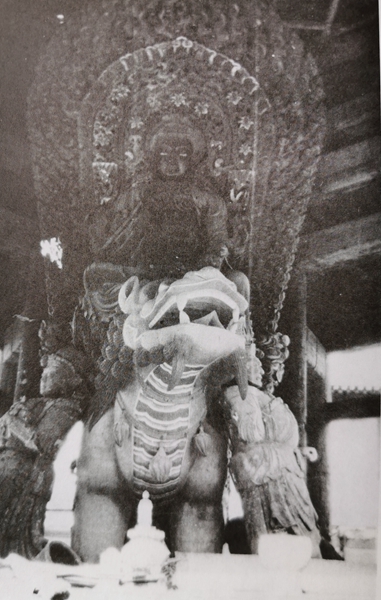

People used to believe that the wooden construction could not survive the 1860s fiery destruction.
However, in 2018, Liu found a group of photos in France, taken in 1882 by Robert de Semalle, a French diplomat based in Beijing. Wooden palatial buildings can clearly be seen in the photos, which Liu hails as the most important finding in recent years.
"These photos were a part of an album left by Semalle for his family," Liu recalls with excitement. "But his descendants didn't know where these places were until we met."
In 1900, Yuanmingyuan was hit again by conflict when the Eight-Nation Alliance Force invaded Beijing. Liu speculated that all these wood structures were thoroughly destroyed then.
Other key figures from the late 19th and the early 20th centuries credited for the precious photos include Lai Afong, a Hong Kong-based photographer, Ernst Ohlmer from Germany, Osvald Siren, a Swedish scholar, and Thomas Child, a British man who lived in Beijing for 20 years. Some photographers left dates on the photos.
"Sometimes, you have to rely on sheer good luck to have a major discovery," Liu says. "If I randomly checked collections in archives or libraries, it would be like looking for a needle in a haystack. A good way to find those photographers who once set foot in Yuanmingyuan is to look for photos in their family collection."
Even after Yuanmingyuan was destroyed, the area was still cordoned off from the public during the imperial years of the Qing Dynasty, so Liu says not many photographers were able to go there.
As a Beijing native, Liu jokes that he has no desire to set foot on the property ladder and all his income goes on traveling and searching for old photos. Liu has managed to get more than 400 glass negatives of Yuanmingyuan. Most of these photographic records were once owned by the families of the photographers.
So far, the understanding is that the earliest known photos of Yuanmingyuan were taken in 1873.